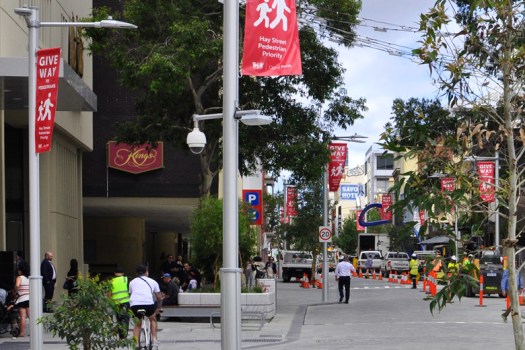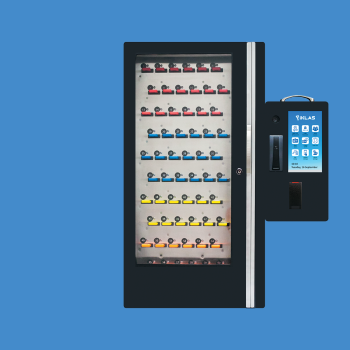
Australia’s Federal and State government sector could unlock an $62 billion ‘digital dividend’ by replacing old technology with cloud-based Software as a Service systems (SaaS), according to a landmark economic analysis from IBRS and Insight Economics.
That figure, equivalent to almost an entire year’s worth of Goods & Services Tax revenue*, is the expert economists’ prediction of the savings to be made over ten years if agencies ditched their datacentres and switched to cloud-based platforms to run their operations.
Edward Chung, chief executive officer of TechnologyOne, which commissioned the work, said: “This report makes it clear. It is in the interests of taxpayers, staff and the community to continue, and in fact accelerate, the digital transformation underway in governments. The opportunity is too big to ignore.”
The technological case for moving to the cloud has been clear for some time but SaaS adoption is still in its early stages in many public sector organisations. The researchers estimated almost half of all large State and Federal government agencies still rely on on-premise software.
In their report, “The Economic Impact of Software-as-a-Service”, IBRS and Insight Economics set out to analyse, for the first time, the savings from modernising IT systems across a range of industries including government, education, health & aged care and financial services.
Using real-world case studies and face-to-face interviews with the leaders of organisations, together with benchmark data from a wide variety of local and international sources, the researchers modelled both the costs of digital transformation and it’s direct and indirect benefits.
They uncovered a game-changing potential digital dividend for the Australian economy—$224 billion over ten years**, enough to lift the country’s Gross Domestic Product by 1.3 percent—all from a relatively simple decision to fast-track investments in a proven, mature technology; SaaS.
Across each industry sector, they found the benefits of moving to SaaS far outweighed the costs. For government specifically, the biggest savings came from the reduced cost of buying and maintaining IT infrastructure, increased labour productivity and reduced financial and audit expenses.
They found agencies can expect Total Cost of Ownership (TCO) savings alone of between 11 percent and 20 per cent on average, depending on their size and structure, with SaaS versus and an on-premise approach.
The IBRS and Insight Economics researchers also found labour force productivity improvements of seven per cent and reduced costs from reactive maintenance, as well as lowered financial auditing and consulting costs.
In addition to the direct benefits, the report suggests switching to SaaS could reduce energy costs and lower Australia’s carbon emissions. Modelling by E3 suggests an increase in cloud computing from 25% to 40% by 2025 would avoid four million tonnes of CO2 emissions by 2030.
“Public sector organisations face a number of economic challenges in the next decade, including recovering from, and responding to COVID-19. We cannot afford to leave technology savings of this order on the table. We need to move faster now and bring forward the benefits,” Mr Chung said.
The opportunity costs of the savings IBRS and Insight Economics found are significant. They could be usefully redirected towards other important investments and services, such as new health services, education funding and infrastructure programs.
The $62 billion ‘digital dividend’ IBRS and Insight Economics found in State and Federal governments could:
- Fund more than 11,500 kms of new roads.
- Fund more than 4 new Sydney Harbour tunnels.
- Fund more than 11 million hospital services over ten years, a 16% expansion in public hospital services per annum.
- Fund 90,000 additional registered nurses per annum for the next 10 years, a 33% expansion in the supply of registered nurses.
- Fund more than 883,000 residential aged care places over ten years, a 41% uplift in services.
- Fund 87,000 new teachers per annum for the next 10 years, a 45% uplift in teachers in Australia.
“As a nation, we have a choice. We can continue to sink money into older, on-premise technologies or we can step on the accelerator, put that investment into innovation, and bring forward the benefits of SaaS so we can take advantage of the savings today,” Mr Chung said.
Benefits of SaaS for State and Federal governments
IBRS and Insight Economics estimated the organisational benefits for governments, based on a migration to a SaaS (Native Integration) solution within three years, included:
- TCO savings in the range of 11 per cent to 20 per cent depending on organisational size and structure.
- Labour force productivity improvements of seven per cent.
- Avoided financial auditing and consulting costs through improved financial reporting and management.
- Reduced costs of reactive maintenance by 8 per cent.
The full report is available here
*Australian Government, Budget strategy and outlook: budget paper no. 1: 2019–20, p. 9-24
**Validated using the Monash Multiregional Forecasting model (MMRF), frequently used by state and federal governments to evaluate new policy proposals.
Comment below to have your say on this story.
If you have a news story or tip-off, get in touch at editorial@governmentnews.com.au.
Sign up to the Government News newsletter






Sue Phillips on: 15 councils participate in SA emissions reduction trial
Garth Daddy on: War memorial contracts fudged, audit finds
Roger Buhlert on: New VLGA appointment vows to lift governance standards